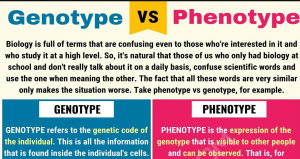Prevalent Methods of Practitioner or healthcare provider Lymphoma

Lymphoma is a remarkably problematic disease that raises critical impediments at the same time of medical diagnosis. Considering https://itlessoneducation.com/genotype-vs-phenotype/ that it will occur in a number of forms and produce a big spectrum from unspecific symptoms, lymphoma is usually diagnosed with the aid of many different approaches. In order to set up the adequate diagnosis, pathologists need to examine the disease right from multiple facets. Morphological behavior, as well as the genotype and phenotype of the lymphoid lesions ought to sometimes be carefully studied in the process of diagnosis. The administration of lymphoma treatments and therapies can only start off after persons with suspected lymphoma get the correct identification.

In order to reveal evidence of the ailment in patients with supposed malignant lymphoma, doctors generally perform a number of preliminary testing. These lab tests include bloodstream analyses, sophisticated physical tests (enlargement on the lymph nodes often has revealed the presence of lymphoma) and sometimes neighboring biopsies in the bone marrow.
Tissue biopsies can provide malignancy specialists with valuable info regarding the sort of lymphoma, the sort of cells linked to causing the disease, the progress rate of this lymphoma, and also the prognosis of this affected sufferer. In order to expose whether the lymphoid lesions are of harmless or malign nature, pathologists analyze the tissue examples from multiple perspectives: general cell overall look under the microscope (morphological examination), exact cell phone subtype (phenotype analysis) and genetic provenience (genotype analysis). If the analyzed lymphoid wounds prove to be malignant, doctors will start the admin of chemotherapeutic drugs right after the type of lymphoma is effectively classified.
A primary stage on diagnosing lymphoma consists for carefully inspecting the morphological features of the lymphoid lesions. The morphological characteristics with the lymph nodes and areas provide doctors with valuable data in the disease, being able to help them distinguish benign styles of lymphoma from malignant ones. Although morphological investigations are essential in the process in diagnosing lymphoma, doctors quite often choose to even more analyze the tissue trial samples by carrying out phenotypic and genotypic tests.
In order to decide the phenotype of the lymphoid cells, medical professionals conduct several tests which can be commonly labelled as cell gun analysis. The method characteristic to these tests includes the use of diverse antibodies intended for revealing clear cell indicators carried by malignant lymphatic cells. These types of tests offer doctors very clear information about the instrumental cells that help in finding out the exact form of lymphoma. Whilst they can also show the presence of Hodgkin's Disease, cell marker tests are commonly employed to identify Non-Hodgkin's Lymphoma subtypes. Such tests are used to detect whether the lymphoma is brought on by abnormal activity of B-cells or T-cells and how mature the causative units are.
In rare cases, solely genotypic research can help doctors determine if the lymphoid wounds are civilized or malignant. Genotypic checks involve sophisticated analyses of the cells' hereditary composition and comprise a few different strategies: cytogenetic explanations, the polymerized chain effect method as well as Southern mark hybridization research. Despite the fact that many of these tests give doctors with detailed facts about lymphoma, they are also time consuming and costly. Caused by these down sides, they are simply performed under special instances, when all the tests neglect to reveal conclusive data at lymphoma.
